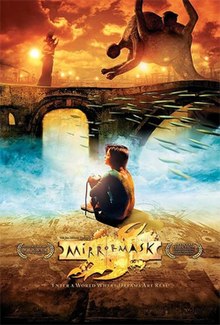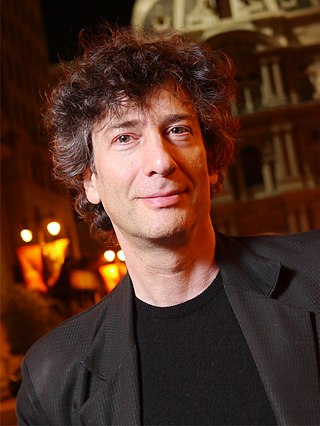
Neil Richard MacKinnon Gaiman is an English author of short fiction, novels, comic books, graphic novels, audio theatre, and screenplays. His works include the comic book series The Sandman and the novels Good Omens, Stardust, Anansi Boys, American Gods, Coraline, and The Graveyard Book. He co-created the TV series adaptions of Good Omens and The Sandman.

Neverwhere is an urban fantasy television miniseries by Neil Gaiman that first aired in 1996 on BBC 2. The series is set in "London Below", a magical realm coexisting with the more familiar London, referred to as "London Above". It was devised by Neil Gaiman and Lenny Henry and directed by Dewi Humphreys. Gaiman adapted the series into a novel, which was released in September 1996. The series and book were partially inspired by Gene Wolfe's novel Free Live Free.
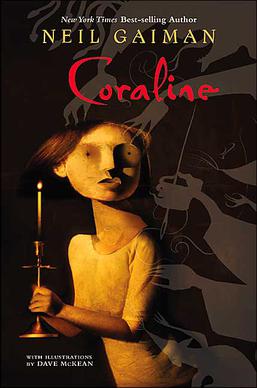
Coraline is a 2002 British dark fantasy horror children's novella by British author Neil Gaiman. Gaiman started writing Coraline in 1990, and it was published in 2002 by Bloomsbury and HarperCollins. It was awarded the 2003 Hugo Award for Best Novella, the 2003 Nebula Award for Best Novel, and the 2002 Bram Stoker Award for Best Work for Young Readers. The Guardian ranked Coraline #82 in its list of 100 Best Books of the 21st Century. It was adapted as a 2009 stop-motion animated film, directed by Henry Selick under the same name.

The Sandman is a comic book written by Neil Gaiman and published by DC Comics. Its artists include Sam Kieth, Mike Dringenberg, Jill Thompson, Shawn McManus, Marc Hempel, Bryan Talbot, and Michael Zulli, with lettering by Todd Klein and covers by Dave McKean. The original series ran for 75 issues from January 1989 to March 1996. Beginning with issue No. 47, it was placed under DC's Vertigo imprint, and following Vertigo's retirement in 2020, reprints have been published under DC's Black Label imprint.

Dream of the Endless is a fictional anthropomorphic personification who first appeared in the first issue of The Sandman, written by Neil Gaiman and published by DC Comics. One of the seven Endless, who are inconceivably powerful beings older and greater than gods, Dream is both lord and personification of all dreams and stories, and all that is not in reality. He has taken many names, including Morpheus, Oneiros, Kai'ckul, and the Sandman, and his appearance can change depending on the person who is seeing him. Dream was named the sixth-greatest comic book character by Empire. He was also named fifteenth in IGN's 100 Top Comic Book Heroes list.
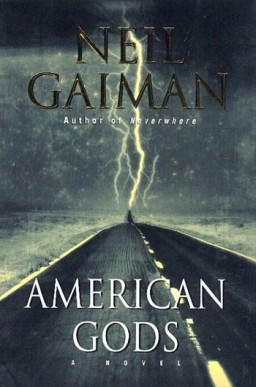
American Gods (2001) is a novel by British author Neil Gaiman. The novel is a blend of Americana, fantasy, and various strands of ancient and modern mythology, all centering on the mysterious and taciturn Shadow.
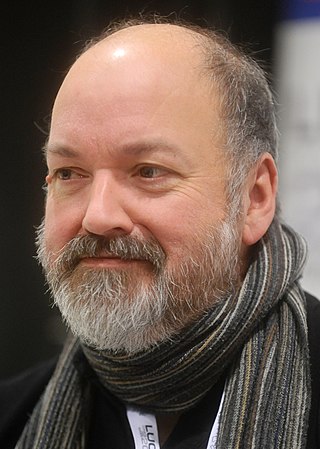
David McKean he's an English artist. His work incorporates drawing, painting, photography, collage, found objects, digital art, and sculpture. McKean has illustrated works by authors such as Neil Gaiman, Grant Morrison, Heston Blumenthal, Ray Bradbury and Stephen King. He has also directed three feature films.
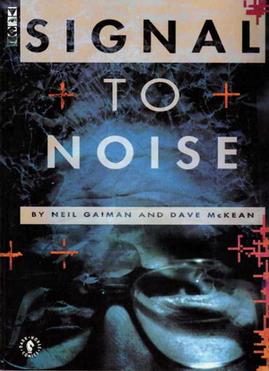
Signal to Noise (ISBN 1-56971-144-5) is a graphic novel written by Neil Gaiman and illustrated by Dave McKean. It was originally serialised in the UK style magazine The Face, beginning in 1989, and collected as a graphic novel in 1992, published by Victor Gollancz Ltd in the UK and by Dark Horse Comics in the US.
"Snow, Glass, Apples" is a 1994 short story written by Neil Gaiman. It was originally released as a benefit book for the Comic Book Legal Defense Fund and was reprinted in the anthology Love in Vein II, edited by Poppy Z. Brite. It is a retelling of the Brothers Grimm fairy tale Snow White, but from her stepmother's point of view.
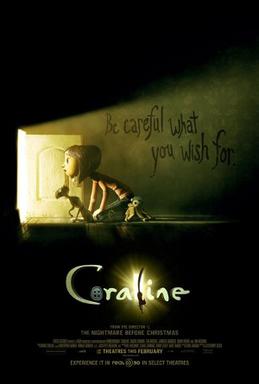
Coraline is a 2009 American stop-motion animated dark fantasy horror film written and directed by Henry Selick, based on Neil Gaiman's novella of the same name. Produced by LAIKA, as the studio's first feature film, it features the voice talents of Dakota Fanning, Teri Hatcher, Jennifer Saunders, Dawn French, Keith David, John Hodgman, Robert Bailey Jr., and Ian McShane. The musical score is by Bruno Coulais. The film tells the story of its eponymous character discovering an idealized alternate universe behind a secret door in her new home, unaware that it contains something dark and sinister.

Stardust is a 2007 romantic fantasy adventure film directed by Matthew Vaughn and co-written by Vaughn and Jane Goldman. Based on Neil Gaiman's 1999 novel of the same name, it features an ensemble cast led by Claire Danes, Charlie Cox, Sienna Miller, Ricky Gervais, Jason Flemyng, Rupert Everett, Peter O'Toole, Michelle Pfeiffer, and Robert De Niro, with narration by Ian McKellen.

The Dead Moon Circus are a group of fictional characters from the Sailor Moon manga series created by Naoko Takeuchi. They serve as the main antagonists of the fourth arc, called Dream in the manga, Sailor Moon SuperS in its first anime adaptation, and Sailor Moon Eternal in the second anime adaptation. They are first introduced in chapter #39 "Dream 1 – Eclipse Dream", originally published in Japan on September 6, 1995. In the original English dubbed anime by Cloverway, they are called the "Dark Moon Circus".

Stephanie Leonidas is an English actress. She is perhaps best known for her roles in the fantasy film MirrorMask (2005), the Syfy series Defiance (2013–2015), and the Crackle crime series Snatch (2017–2018).
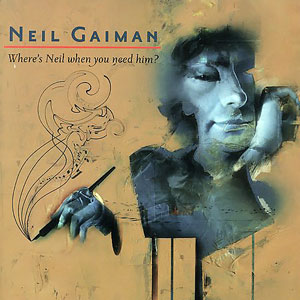
Where's Neil When You Need Him? is a tribute album based on the works of fantasy writer Neil Gaiman.
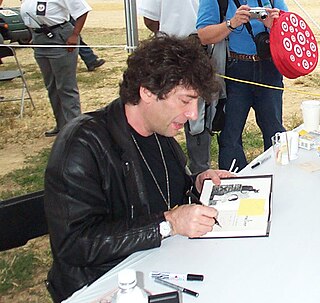
This is a list of works by Neil Gaiman.
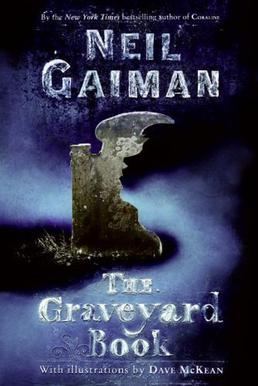
The Graveyard Book is a young adult novel written by the English author Neil Gaiman, simultaneously published in Britain and America in 2008. The Graveyard Book traces the story of the boy Nobody "Bod" Owens who is adopted and reared by the supernatural occupants of a graveyard after his family is brutally murdered.
Rogue Artists Ensemble is a theater company based in Los Angeles, California that specializes in “Hyper-theatrical” performance. According to the mission statement on the company’s official website:
Rogue Artists Ensemble is a collective of multi-disciplinary artists who create Hyper-theater, an innovative hybrid of theater traditions, puppetry, mask work, dance, music, and modern technology. Through a collaborative development process, with an emphasis on design and storytelling, the Rogues create original, thought provoking performances. We cultivate unique audience experiences that appeal to multiple generations of theatergoers in order to expand the boundaries of contemporary American theater.
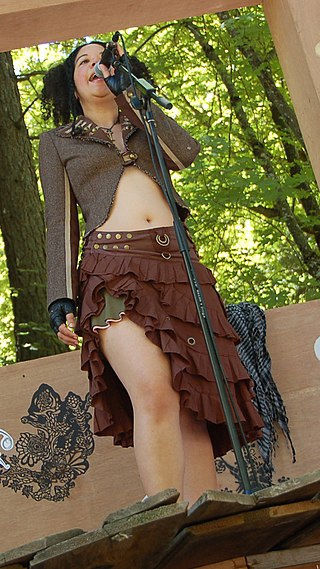
Olga Nunes is a Canadian-born performer, pianist, singer and composer based in San Francisco, California.
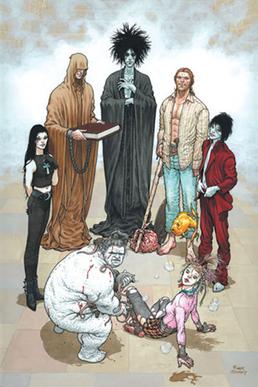
The Endless are a family of cosmic beings who appear in American comic books published by DC Comics. The members of the family are: Death, Delirium, Desire, Despair, Destiny, Destruction and Dream.
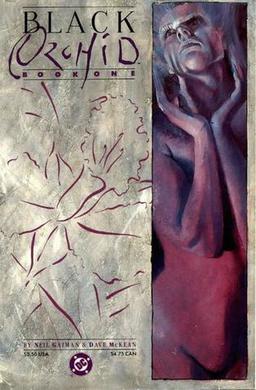
Black Orchid is an American comic book written by Neil Gaiman with art by Dave McKean. It was published by DC Comics as a three-issue limited series from December 1988 to February 1989, and was later reprinted in trade paperback form. Black Orchid follows two girls, Flora and Suzy, who awaken in a greenhouse. Their journey to find out who they are leads them into contact with DC Universe figures like Batman and Swamp Thing, but also into conflict with criminal mastermind Lex Luthor, who seeks them for his own interests.
